Fruits
Vegetables
Grains
Seeds
Algae
Powder
Liquid
Whole
Capsules
Online
Supermarkets
Health Food Stores
Convenience Stores
Dietary Supplements
Food Beverages
Cosmetics
North America
Europe
South America
Asia Pacific
Middle East and Africa
North America Outlook (USD Billion, 2019-2035)
North America Superfoods Market by Product Type
Fruits
Vegetables
Grains
Seeds
Algae
North America Superfoods Market by Form Type
Powder
Liquid
Whole
Capsules
North America Superfoods Market by Distribution Channel Type
Online
Supermarkets
Health Food Stores
Convenience Stores
North America Superfoods Market by End Use Type
Dietary Supplements
Food Beverages
Cosmetics
North America Superfoods Market by Regional Type
US
Canada
US Outlook (USD Billion, 2019-2035)
US Superfoods Market by Product Type
Fruits
Vegetables
Grains
Seeds
Algae
US Superfoods Market by Form Type
Powder
Liquid
Whole
Capsules
US Superfoods Market by Distribution Channel Type
Online
Supermarkets
Health Food Stores
Convenience Stores
US Superfoods Market by End Use Type
Dietary Supplements
Food Beverages
Cosmetics
CANADA Outlook (USD Billion, 2019-2035)
CANADA Superfoods Market by Product Type
Fruits
Vegetables
Grains
Seeds
Algae
CANADA Superfoods Market by Form Type
Powder
Liquid
Whole
Capsules
CANADA Superfoods Market by Distribution Channel Type
Online
Supermarkets
Health Food Stores
Convenience Stores
CANADA Superfoods Market by End Use Type
Dietary Supplements
Food Beverages
Cosmetics
Europe Outlook (USD Billion, 2019-2035)
Europe Superfoods Market by Product Type
Fruits
Vegetables
Grains
Seeds
Algae
Europe Superfoods Market by Form Type
Powder
Liquid
Whole
Capsules
Europe Superfoods Market by Distribution Channel Type
Online
Supermarkets
Health Food Stores
Convenience Stores
Europe Superfoods Market by End Use Type
Dietary Supplements
Food Beverages
Cosmetics
Europe Superfoods Market by Regional Type
Germany
UK
France
Russia
Italy
Spain
Rest of Europe
GERMANY Outlook (USD Billion, 2019-2035)
GERMANY Superfoods Market by Product Type
Fruits
Vegetables
Grains
Seeds
Algae
GERMANY Superfoods Market by Form Type
Powder
Liquid
Whole
Capsules
GERMANY Superfoods Market by Distribution Channel Type
Online
Supermarkets
Health Food Stores
Convenience Stores
GERMANY Superfoods Market by End Use Type
Dietary Supplements
Food Beverages
Cosmetics
UK Outlook (USD Billion, 2019-2035)
UK Superfoods Market by Product Type
Fruits
Vegetables
Grains
Seeds
Algae
UK Superfoods Market by Form Type
Powder
Liquid
Whole
Capsules
UK Superfoods Market by Distribution Channel Type
Online
Supermarkets
Health Food Stores
Convenience Stores
UK Superfoods Market by End Use Type
Dietary Supplements
Food Beverages
Cosmetics
FRANCE Outlook (USD Billion, 2019-2035)
FRANCE Superfoods Market by Product Type
Fruits
Vegetables
Grains
Seeds
Algae
FRANCE Superfoods Market by Form Type
Powder
Liquid
Whole
Capsules
FRANCE Superfoods Market by Distribution Channel Type
Online
Supermarkets
Health Food Stores
Convenience Stores
FRANCE Superfoods Market by End Use Type
Dietary Supplements
Food Beverages
Cosmetics
RUSSIA Outlook (USD Billion, 2019-2035)
RUSSIA Superfoods Market by Product Type
Fruits
Vegetables
Grains
Seeds
Algae
RUSSIA Superfoods Market by Form Type
Powder
Liquid
Whole
Capsules
RUSSIA Superfoods Market by Distribution Channel Type
Online
Supermarkets
Health Food Stores
Convenience Stores
RUSSIA Superfoods Market by End Use Type
Dietary Supplements
Food Beverages
Cosmetics
ITALY Outlook (USD Billion, 2019-2035)
ITALY Superfoods Market by Product Type
Fruits
Vegetables
Grains
Seeds
Algae
ITALY Superfoods Market by Form Type
Powder
Liquid
Whole
Capsules
ITALY Superfoods Market by Distribution Channel Type
Online
Supermarkets
Health Food Stores
Convenience Stores
ITALY Superfoods Market by End Use Type
Dietary Supplements
Food Beverages
Cosmetics
SPAIN Outlook (USD Billion, 2019-2035)
SPAIN Superfoods Market by Product Type
Fruits
Vegetables
Grains
Seeds
Algae
SPAIN Superfoods Market by Form Type
Powder
Liquid
Whole
Capsules
SPAIN Superfoods Market by Distribution Channel Type
Online
Supermarkets
Health Food Stores
Convenience Stores
SPAIN Superfoods Market by End Use Type
Dietary Supplements
Food Beverages
Cosmetics
REST OF EUROPE Outlook (USD Billion, 2019-2035)
REST OF EUROPE Superfoods Market by Product Type
Fruits
Vegetables
Grains
Seeds
Algae
REST OF EUROPE Superfoods Market by Form Type
Powder
Liquid
Whole
Capsules
REST OF EUROPE Superfoods Market by Distribution Channel Type
Online
Supermarkets
Health Food Stores
Convenience Stores
REST OF EUROPE Superfoods Market by End Use Type
Dietary Supplements
Food Beverages
Cosmetics
APAC Outlook (USD Billion, 2019-2035)
APAC Superfoods Market by Product Type
Fruits
Vegetables
Grains
Seeds
Algae
APAC Superfoods Market by Form Type
Powder
Liquid
Whole
Capsules
APAC Superfoods Market by Distribution Channel Type
Online
Supermarkets
Health Food Stores
Convenience Stores
APAC Superfoods Market by End Use Type
Dietary Supplements
Food Beverages
Cosmetics
APAC Superfoods Market by Regional Type
China
India
Japan
South Korea
Malaysia
Thailand
Indonesia
Rest of APAC
CHINA Outlook (USD Billion, 2019-2035)
CHINA Superfoods Market by Product Type
Fruits
Vegetables
Grains
Seeds
Algae
CHINA Superfoods Market by Form Type
Powder
Liquid
Whole
Capsules
CHINA Superfoods Market by Distribution Channel Type
Online
Supermarkets
Health Food Stores
Convenience Stores
CHINA Superfoods Market by End Use Type
Dietary Supplements
Food Beverages
Cosmetics
INDIA Outlook (USD Billion, 2019-2035)
INDIA Superfoods Market by Product Type
Fruits
Vegetables
Grains
Seeds
Algae
INDIA Superfoods Market by Form Type
Powder
Liquid
Whole
Capsules
INDIA Superfoods Market by Distribution Channel Type
Online
Supermarkets
Health Food Stores
Convenience Stores
INDIA Superfoods Market by End Use Type
Dietary Supplements
Food Beverages
Cosmetics
JAPAN Outlook (USD Billion, 2019-2035)
JAPAN Superfoods Market by Product Type
Fruits
Vegetables
Grains
Seeds
Algae
JAPAN Superfoods Market by Form Type
Powder
Liquid
Whole
Capsules
JAPAN Superfoods Market by Distribution Channel Type
Online
Supermarkets
Health Food Stores
Convenience Stores
JAPAN Superfoods Market by End Use Type
Dietary Supplements
Food Beverages
Cosmetics
SOUTH KOREA Outlook (USD Billion, 2019-2035)
SOUTH KOREA Superfoods Market by Product Type
Fruits
Vegetables
Grains
Seeds
Algae
SOUTH KOREA Superfoods Market by Form Type
Powder
Liquid
Whole
Capsules
SOUTH KOREA Superfoods Market by Distribution Channel Type
Online
Supermarkets
Health Food Stores
Convenience Stores
SOUTH KOREA Superfoods Market by End Use Type
Dietary Supplements
Food Beverages
Cosmetics
MALAYSIA Outlook (USD Billion, 2019-2035)
MALAYSIA Superfoods Market by Product Type
Fruits
Vegetables
Grains
Seeds
Algae
MALAYSIA Superfoods Market by Form Type
Powder
Liquid
Whole
Capsules
MALAYSIA Superfoods Market by Distribution Channel Type
Online
Supermarkets
Health Food Stores
Convenience Stores
MALAYSIA Superfoods Market by End Use Type
Dietary Supplements
Food Beverages
Cosmetics
THAILAND Outlook (USD Billion, 2019-2035)
THAILAND Superfoods Market by Product Type
Fruits
Vegetables
Grains
Seeds
Algae
THAILAND Superfoods Market by Form Type
Powder
Liquid
Whole
Capsules
THAILAND Superfoods Market by Distribution Channel Type
Online
Supermarkets
Health Food Stores
Convenience Stores
THAILAND Superfoods Market by End Use Type
Dietary Supplements
Food Beverages
Cosmetics
INDONESIA Outlook (USD Billion, 2019-2035)
INDONESIA Superfoods Market by Product Type
Fruits
Vegetables
Grains
Seeds
Algae
INDONESIA Superfoods Market by Form Type
Powder
Liquid
Whole
Capsules
INDONESIA Superfoods Market by Distribution Channel Type
Online
Supermarkets
Health Food Stores
Convenience Stores
INDONESIA Superfoods Market by End Use Type
Dietary Supplements
Food Beverages
Cosmetics
REST OF APAC Outlook (USD Billion, 2019-2035)
REST OF APAC Superfoods Market by Product Type
Fruits
Vegetables
Grains
Seeds
Algae
REST OF APAC Superfoods Market by Form Type
Powder
Liquid
Whole
Capsules
REST OF APAC Superfoods Market by Distribution Channel Type
Online
Supermarkets
Health Food Stores
Convenience Stores
REST OF APAC Superfoods Market by End Use Type
Dietary Supplements
Food Beverages
Cosmetics
South America Outlook (USD Billion, 2019-2035)
South America Superfoods Market by Product Type
Fruits
Vegetables
Grains
Seeds
Algae
South America Superfoods Market by Form Type
Powder
Liquid
Whole
Capsules
South America Superfoods Market by Distribution Channel Type
Online
Supermarkets
Health Food Stores
Convenience Stores
South America Superfoods Market by End Use Type
Dietary Supplements
Food Beverages
Cosmetics
South America Superfoods Market by Regional Type
Brazil
Mexico
Argentina
Rest of South America
BRAZIL Outlook (USD Billion, 2019-2035)
BRAZIL Superfoods Market by Product Type
Fruits
Vegetables
Grains
Seeds
Algae
BRAZIL Superfoods Market by Form Type
Powder
Liquid
Whole
Capsules
BRAZIL Superfoods Market by Distribution Channel Type
Online
Supermarkets
Health Food Stores
Convenience Stores
BRAZIL Superfoods Market by End Use Type
Dietary Supplements
Food Beverages
Cosmetics
MEXICO Outlook (USD Billion, 2019-2035)
MEXICO Superfoods Market by Product Type
Fruits
Vegetables
Grains
Seeds
Algae
MEXICO Superfoods Market by Form Type
Powder
Liquid
Whole
Capsules
MEXICO Superfoods Market by Distribution Channel Type
Online
Supermarkets
Health Food Stores
Convenience Stores
MEXICO Superfoods Market by End Use Type
Dietary Supplements
Food Beverages
Cosmetics
ARGENTINA Outlook (USD Billion, 2019-2035)
ARGENTINA Superfoods Market by Product Type
Fruits
Vegetables
Grains
Seeds
Algae
ARGENTINA Superfoods Market by Form Type
Powder
Liquid
Whole
Capsules
ARGENTINA Superfoods Market by Distribution Channel Type
Online
Supermarkets
Health Food Stores
Convenience Stores
ARGENTINA Superfoods Market by End Use Type
Dietary Supplements
Food Beverages
Cosmetics
REST OF SOUTH AMERICA Outlook (USD Billion, 2019-2035)
REST OF SOUTH AMERICA Superfoods Market by Product Type
Fruits
Vegetables
Grains
Seeds
Algae
REST OF SOUTH AMERICA Superfoods Market by Form Type
Powder
Liquid
Whole
Capsules
REST OF SOUTH AMERICA Superfoods Market by Distribution Channel Type
Online
Supermarkets
Health Food Stores
Convenience Stores
REST OF SOUTH AMERICA Superfoods Market by End Use Type
Dietary Supplements
Food Beverages
Cosmetics
MEA Outlook (USD Billion, 2019-2035)
MEA Superfoods Market by Product Type
Fruits
Vegetables
Grains
Seeds
Algae
MEA Superfoods Market by Form Type
Powder
Liquid
Whole
Capsules
MEA Superfoods Market by Distribution Channel Type
Online
Supermarkets
Health Food Stores
Convenience Stores
MEA Superfoods Market by End Use Type
Dietary Supplements
Food Beverages
Cosmetics
MEA Superfoods Market by Regional Type
GCC Countries
South Africa
Rest of MEA
GCC COUNTRIES Outlook (USD Billion, 2019-2035)
GCC COUNTRIES Superfoods Market by Product Type
Fruits
Vegetables
Grains
Seeds
Algae
GCC COUNTRIES Superfoods Market by Form Type
Powder
Liquid
Whole
Capsules
GCC COUNTRIES Superfoods Market by Distribution Channel Type
Online
Supermarkets
Health Food Stores
Convenience Stores
GCC COUNTRIES Superfoods Market by End Use Type
Dietary Supplements
Food Beverages
Cosmetics
SOUTH AFRICA Outlook (USD Billion, 2019-2035)
SOUTH AFRICA Superfoods Market by Product Type
Fruits
Vegetables
Grains
Seeds
Algae
SOUTH AFRICA Superfoods Market by Form Type
Powder
Liquid
Whole
Capsules
SOUTH AFRICA Superfoods Market by Distribution Channel Type
Online
Supermarkets
Health Food Stores
Convenience Stores
SOUTH AFRICA Superfoods Market by End Use Type
Dietary Supplements
Food Beverages
Cosmetics
REST OF MEA Outlook (USD Billion, 2019-2035)
REST OF MEA Superfoods Market by Product Type
Fruits
Vegetables
Grains
Seeds
Algae
REST OF MEA Superfoods Market by Form Type
Powder
Liquid
Whole
Capsules
REST OF MEA Superfoods Market by Distribution Channel Type
Online
Supermarkets
Health Food Stores
Convenience Stores
REST OF MEA Superfoods Market by End Use Type
Dietary Supplements
Food Beverages
Cosmetics

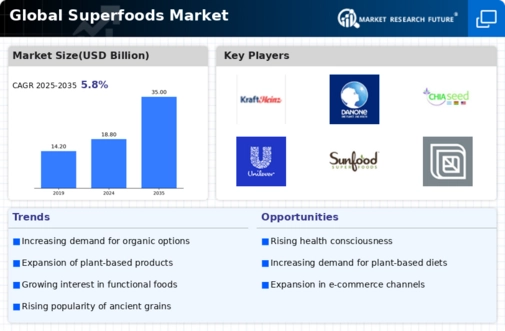
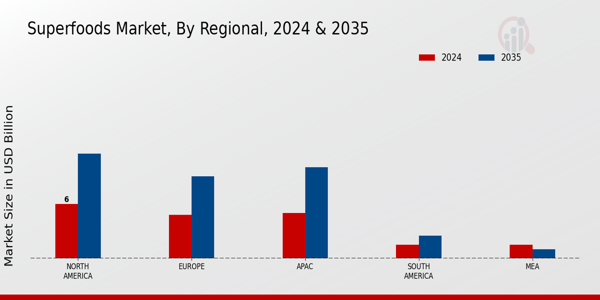
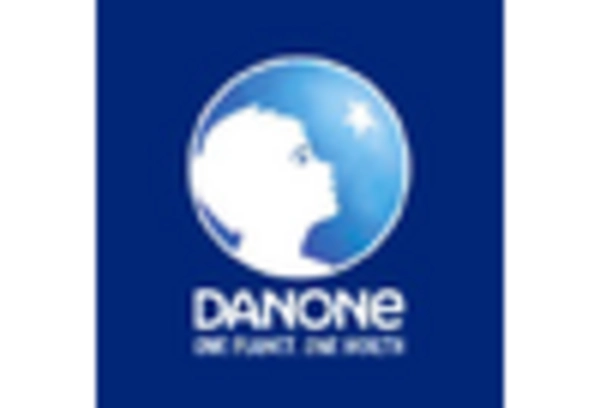

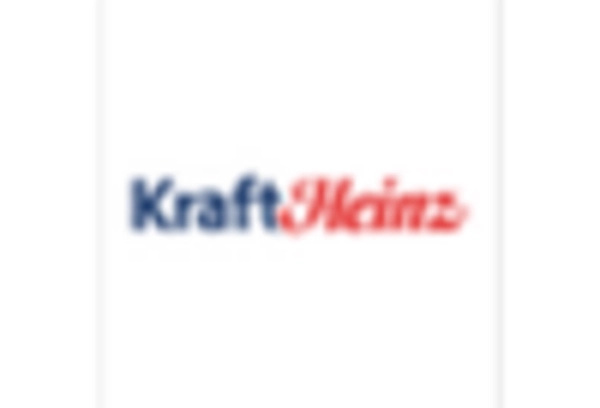

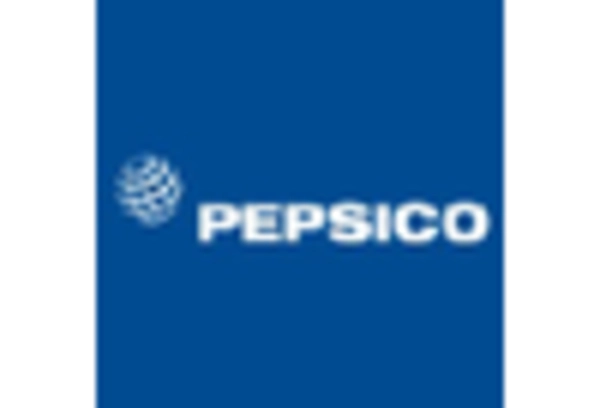


Leave a Comment